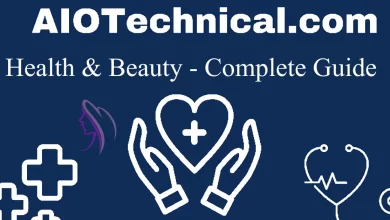A smile is a curve that sets everything straight, but when gum disease takes hold, even the straightest line can start to waver. This common dental issue, often underestimated, is more than just a minor inconvenience. It affects not only your dental health but also your overall well-being.
In this guide, we’ll walk you through simple but powerful steps to reversing gum disease and restoring confidence in your smile.
Understanding the Enemy Within: What Is Gum Disease?
Gum disease is an infection of the tissues that hold your teeth in place. It’s a chronic condition that can worsen over time, leading to serious dental problems if left untreated. The two primary stages of gum disease are gingivitis and periodontitis.
Gingivitis
The initial stage of gum disease is gingivitis, characterized by red, swollen gums that bleed easily when you brush or floss. At this point, the damage is still reversible, and good oral hygiene is the key to its treatment.
Periodontitis Disease
If gingivitis progresses, it can turn into periodontitis. With periodontitis, the inner layer of the gum and bone pulls away from the teeth and forms pockets that can become infected.
The body’s immune system fights the bacteria as the plaque spreads and grows below the gum line. Without treatment, the bones, gums, and tissue that support the teeth are destroyed, leading to tooth loss.
Taking the First Step to Combat Gum Disease
Reversing gum disease begins with a commitment to better oral health practices. Here’s what you can do to start reclaiming your dental health.
Effective Brushing
Brush your teeth twice a day with a soft-bristled brush. Use small, circular motions, ensuring you hit every tooth and the gum line. This will help reduce plaque, a sticky film of bacteria that forms on your teeth and hardens into tartar if not removed.
Floss Like a Boss
Flossing is vital to preventing gum disease. It removes plaque and food particles from places your toothbrush can’t reach, like between your teeth and under the gum line. Make it a habit to floss at least once a day, but preferably after every meal.
Rinsing With Antimicrobial Mouthwash
Using an antimicrobial mouthwash in your oral hygiene routine can cut the bacteria that cause plaque and early gum disease. You should use mouthwash after brushing and flossing. It will make your mouth cleaner and safer.
This step helps maintain good oral health. It also prevents long-term oral problems.
Be Mindful of Your Diet
Foods that are high in sugar or simple carbohydrates feed the bacteria that cause gum disease. Instead, opt for a diet rich in fruits, vegetables, whole grains, and lean proteins. These foods help strengthen your immune system and contribute to better oral health.
Supercharging Your Routine with Professional Care
While a solid homecare regimen is crucial, you can’t overlook the power of professional dental care in reversing gum disease.
Regular Dental Visits
To keep your mouth healthy, you should schedule regular visits with your dentist or dental hygienist. They will clean your teeth and check for problems.
During these appointments, they will remove hardened plaque (tartar). They will also spot early signs of gingivitis and give preventive treatment. This treatment stops gingivitis from getting worse and becoming periodontitis, a severe form of gum disease.
Taking these proactive steps can help ensure your teeth and gums stay healthy in the long run.
Professional Cleaning
A dental cleaning, or scaling by professionals like those from Premier Dentist Philadelphia, removes plaque and tartar from your teeth, especially below the gum line. If you have signs of gum disease, your dentist may recommend a deep cleaning, also known as scaling and root planing, to treat it.
Root Planing
Root planing, a dental procedure, involves meticulously cleaning the root surfaces of the teeth to remove bacteria and plaque buildup. By smoothing these surfaces, it creates an environment where bacteria find it harder to adhere, promoting healthier gums.
Additionally, this process facilitates the reattachment of gums to the teeth, aiding in overall dental health and preventing further issues related to gum disease.
Additional Tactics in the Battle Against Gum Disease
Beyond the basics, several practices can provide that extra edge in your fight against gum disease.
Taking Care of Your Tongue
For optimal oral hygiene, incorporating gentle tongue cleaning into your routine can significantly reduce bad breath and enhance mouth cleanliness. By eliminating bacteria buildup, either through using your toothbrush or a specialized tongue scraper, you can effectively promote fresher breath and overall oral health.
Quitting Smoking
Tobacco use has been strongly associated with a myriad of severe health conditions, ranging from gum disease to oral cancer. Hence, if you find yourself engaging in smoking or chewing tobacco, it is highly advisable to contemplate quitting.
Your dentist, being a reliable source of guidance in this regard, can also suggest various resources and strategies to assist you in this cessation journey. Your oral health and overall well-being stand to benefit significantly from taking this proactive step towards a tobacco-free lifestyle.
Managing Stress
Stress can hinder the body’s immune response against infections like gum disease. Hence, incorporating healthy stress-reduction techniques into your routine can enhance your body’s resilience against infections and promote overall well-being.
Avoiding Clenching and Grinding
Clenching or grinding your teeth, known as bruxism, can exert excessive force on the supporting tissues of the teeth, including the gums. This increased pressure could accelerate the progression of gum disease, leading to potential complications such as gum recession and increased susceptibility to infections. It is essential to address bruxism early on to prevent further damage to your oral health.
The Importance of Commitment and Consistency
Reversing gum disease is as much about lifestyle as it is about treatment. Consistency and commitment to these oral health practices are essential. A daily routine that includes proper brushing, flossing, and a healthy diet can go a long way in preventing and even reversing gum disease.
Understand The Importance of Proper Oral Hygiene for Reversing Gum Disease
Gum disease is common, but it’s not something you have to live with. By adding these simple habits to your life, you can control your dental health. Then, you can have a healthy, confident smile again.
Remember, oral health is an essential part of overall health, and investing in it will pay dividends for years to come. Take the first step today. With every brush, floss, and dental visit, you’re closer to reversing gum disease and getting back your smile.
Discover expert advice, tips, and secrets on various topics for a healthier, happier you. Begin your journey to better living now by checking out our blog.




